A group of concerned and relevant community individuals established the Waratah Residents Association in August 2020 and applied for a Community COVID Grant for a sum of $500,000 to Connect the Waratah township as a result of the COVID isolation and shutdown. The submission is outlined below (without the details of costs and Association members etc).
The submission was made on the due date in August and in conjunction with a Grants staff member online to ensure the Association had met all requirements.
On 26 August the Association received a reply from the Grants Committee which stated:-
“Large applicants to the Tasmanian Community Fund are required to contribute, from their own or other funds, 10% of the amount being sought from the TCF. Through the pre-eligibility assessment process, it was identified that the application did not comply with the requirements of the Tasmanian Community Fund application form/guidelines. Unfortunately, therefore, the application cannot be accepted for assessment.”
This was a complete surprise as it was related for the need for the applicant to demonstrate it had 10% of the funding within its own account. This was a known requirement and was discussed with the Grant staff member at the time of application. That staff member indicated, given the Association had substantive in-kind support from the local community, that those details would wait until the second-round review of such Grants in October.
What a shock to the Association!
The rejection of the application was authorised by a Board Member of TasWater.
What goes on in this organisation? Because when you read the application below, it is absolutely symbiotic with the proposal by the proponent under the EOI from TasWater for the reinstatement of the Waratah Reservoir which TasWater unilaterally ceased in an announcement to decommission on 17 August.
So, the COVID Grant submission was made by the Waratah Association on the 12th of August, TasWater announced decommissioning on 17 August, and the TasWater Board Member told us the Association was ineligible on 26 August.
Nothing dodgy here at all.
TasWater has indicated, post its obfuscatory press release, that the proponent had withdrawn its proposal under the EOI . This is NOT correct as the proponent has indicated it wishes to proceed with the project as it has outlined to TasWater, which surprise surprise, works for the entire Waratah Community as per the attached proposal to the COVID Grants Committee.
Perhaps the Residents Assocation should request an RTI from TasWater regarding the litany of communications that have transpired with the proponent, the COVID Grants Committee, the TasWater Board Director who signed the rejection, and of course Ministers Feguson, Barnett and the Premier?
The Submission absent Costings is outlined below.
THE WARATAH LOOP
Introduction:
The state government has introduced a COVID19 Grant for non-profit organizations to seek up to $500,000 for communities to implement programs to enable SUPPORT>CONNECTION>REBUILD activities. This submission details one such program for the Waratah community.
Outline:
Waratah has a unique and well- loved history, heralded as the first mineral activity in Tasmania and saving the state from economic disaster and annexure to Victoria.
The concept is situated near the Mt Bischoff deposit and focused on the Tasmanian Heritage Old Powerhouse which was the basis of the substantive contribution to the foundation of the township of Waratah and the economic rehabilitation of the state’s economy.
This submission will focus on the CONNECTION parameter of the Grant as we endeavour to rebuild the lonely and lost community that has developed, as a result of COVID19. And most importantly will aim to be completed in time to commemorate 150 Years since the discovery of the tin deposit at Mt Bischoff on 4 December 1871.
The Proposal:
For the community to be able to CONNECT as described above, it is proposed for the following activities be funded by the Grant and be achieved as soon as possible.
- Redesign the old railway bridge across the Waratah Town Dam to meet all OH&S and Council standards, become available for public access, and be a focus of the town history.
- Completely refresh the Old Powerhouse walking track from William Street to standards equivalent to that of Philosophers Falls
- Remove all extraneous material at the Old Powerhouse e.g. roofing material, remnant wooden scrap etc and reinforce remaining parts to enable safe and secure visitation by the community and tourists
- Rebuild the bridge over the Waratah River at Ringtail Falls to meet OH&S and Council standards
- Completely refresh the walking track from Ringtail Falls to Mount Street near the Tarkinese Embassy.
- Place Tourism Interpretation Signs at all strategic positions along this route
This array of regenerated facilities – THE WARATAH LOOP – is portrayed in the attached schematic.
This portrayal of the LOOP has been created by a 13 year old schoolgirl raised in the township. What better way to describe community spirit and CONNECTION. Let us make Waratah symbolic of her humanity, creativity, and love.
The Process:
The submission has a social licence with the support of local business and other groups. It is proposed that the activities detailed above be completed as follows:-
- An Incorporated Association (not for profit) has been established by passionate and dedicated residents – The Waratah Residents Association Incorporated
- A Treasurer has been appointed to monitor and control all $$$ outgoings/transactions
- Contracts for services/supplies be granted to local companies and tradies, including the Fagans, Grange Resources, Bluestone, and possibly Sustainable Timbers Tasmania after appropriate direct consultation. All the above will be supported as needed by the Waratah Men Shed.
- All approvals to conduct such activities be obtained/negotiated with the Waratah Wynyard Council, Sustainable Timbers Tasmania, and relevant private individuals
- Ultimately allow for the LOOP to be linked to the Pebble Pathway with aboriginal group(s) approval and input
- Refine preliminary conceptual plans and estimated costings from local enterprises and for all developments to comply to with relevant Australian standards, Council regulations and the practices of Parks and Wildlife Services
Powerhouse rehabilitation:
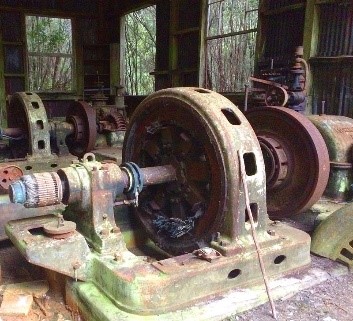
It remains a legacy site for early world and Australian adoption of hydroelectricity generation as does the Waratah area.
Hydro mechanical power was used at the initiation of mining from 1871 with early DC hydroelectric power installed in 1883. AC generation was installed at a later date and improved with the construction and commissioning of this power station in 1907.
It is believed the building was decommissioned around 1957.
The works considered would be to clear bushland surrounding the building to protect further impact from falling trees and to be able to remove debris.
The fallen materials at the rear require removal and storage at an area constructed behind the current building.
An assessment of the existing structure be made to determine which sections can be stabilised and which to be removed.
Cleaning and organisation within the footprint of the building to reveal the remains of the four turbines
It is estimated to require a time frame of between up to six weeks for a team of four to complete.
Materials sourcing are yet to be determined but at this stage the Association is exploring possibilities of steel bracing and assistance from the Savage River rescue crew.
Walking Tracks:
The majority of the Powerhouse walking tracks remain cleared and reasonable condition at a grade 3 to 4 rating as per Parks and Wildlife Services Management Practices
There may exist a need to slightly re-route a section of the track depending on land boundaries.
There are several wet areas requiring improved drainage as well as steeper areas requiring cording and step construction or repairs.
The steeper but shorter Western section is likely to require areas of benching to prevent erosion from increased foot traffic.
Quotes for basic track clearing are for a team of four at 600 metres per day. The track is roughly 3480 metres long with an estimate therefore of about 6 days.
Further benching, cording and step construction is estimated to take a further two weeks of activity.
Materials such as treated timber for steps, wire, gravel and supports – costs have been estimated based on known prior activities by approved track builders
Ringtail Falls bridge:
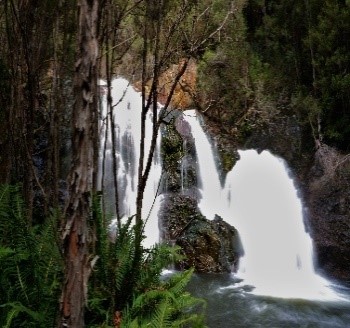
Ringtail Falls.
To complete a round trip, the Waratah River must be crossed at Ringtail Falls.
Historically there have been many timber structures which have had limited life spans due to deteriorating materials or damage by floods.
Recently a more substantial wooden bridge from recycled timbers from the Powerhouse was constructed with the assistance of community members and the OffRoad Adventure Show crew.
There are currently two possible options, being an engineered truss bridge or a suspension bridge.
To reduce likely flood damage, it is suggested that a truss bridge be built spanning between higher rock shelfs above the river to allow for sufficient clearance.
At this level, an unsupported span of 10 metres will be required.
Options for a truss bridge would include either a modular under truss design with single handrail or a walk through truss design.
Both would need to be only single person wide to allow reduced passive and active loads.
It would have to tolerate snow loading and freeze cycles so should not have sealed sections of steel to prevent freeze splitting.
It would be desirable to build in a prefabricated fashion to enable it to be manually transported to the site and assembled.
Rough estimates have been completed for bridge design, manufacture, foot construction, materials and labour for a prefabricated modular under truss or walk through truss.
Old Railway Bridge:
The old railway bridge in the centre of town over the outfall of the Waratah dam has been closed to pedestrians for a number of years due to safety issues. This proposal looks at an option that would enable its reopening, be a major part of the LOOP, allow limited pedestrian traffic, and create an innovative tourist attraction by itself.
The concept is to build an independent trestle platform about one metre above the existing rail corridor and about 1.5 metres wide, sufficient for wheelchair and limited pedestrian traffic.
On either side of this platform a replica image, of the old steam train and associated carriages would span the length of the trestle, with viewing windows etc. These structures would be made of lightweight material e.g. aluminium to ensure appropriate load bearing standards are fully met. See image below.
Cost Estimates:
All costings for the above concepts, both labour and materials, are detailed in the answer to Question 4 and include ongoing track maintenance for the next 5 years by Council officers.

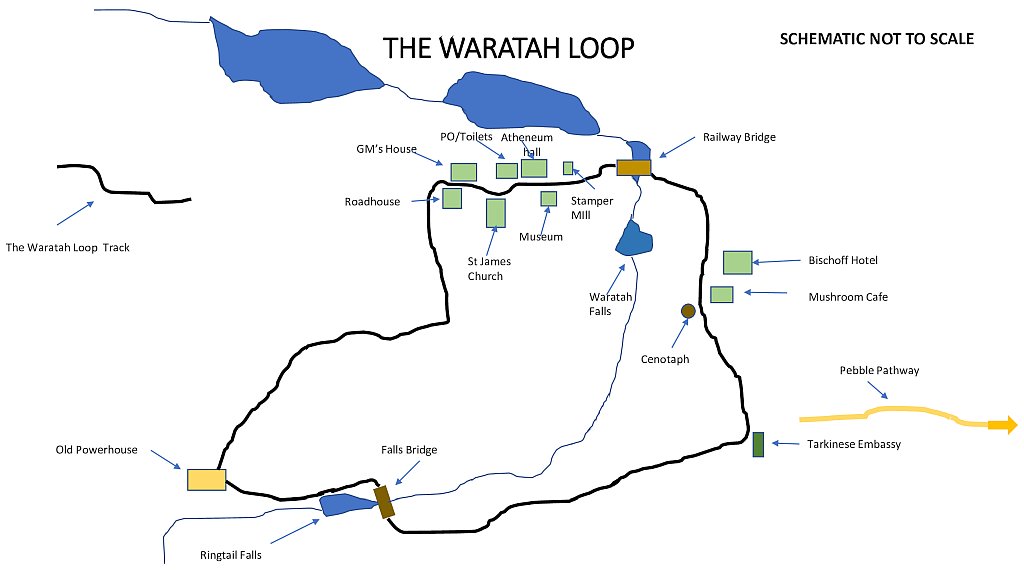
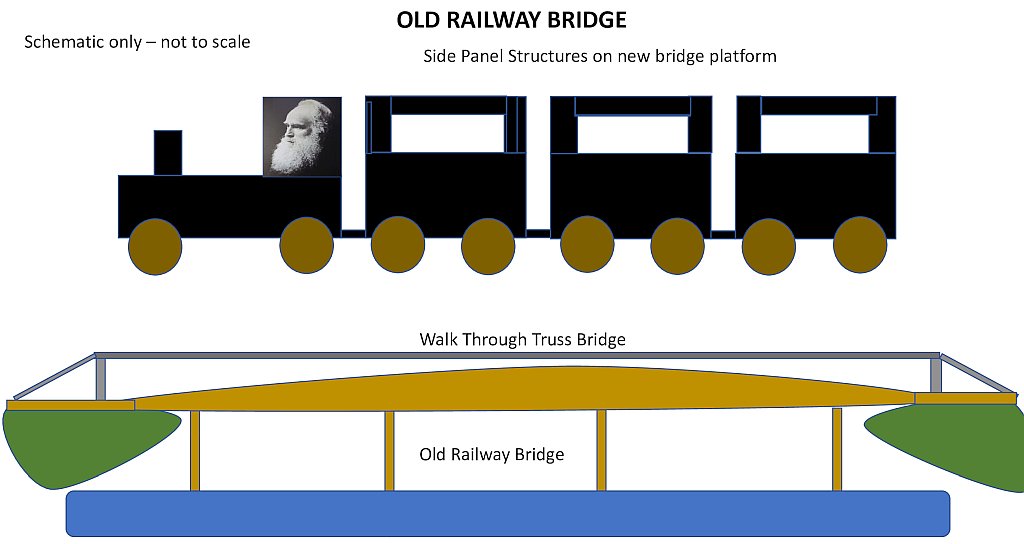


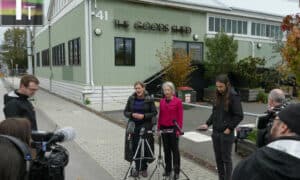

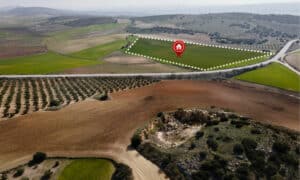




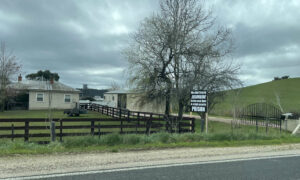





















Richard Van Raay
January 29, 2022 at 18:04
This would be a fantastic way to encourage tourists to Waratah from all around the world!
It would encourage locals to get out and explore their own backyard, and to learn more about our fascinating history.